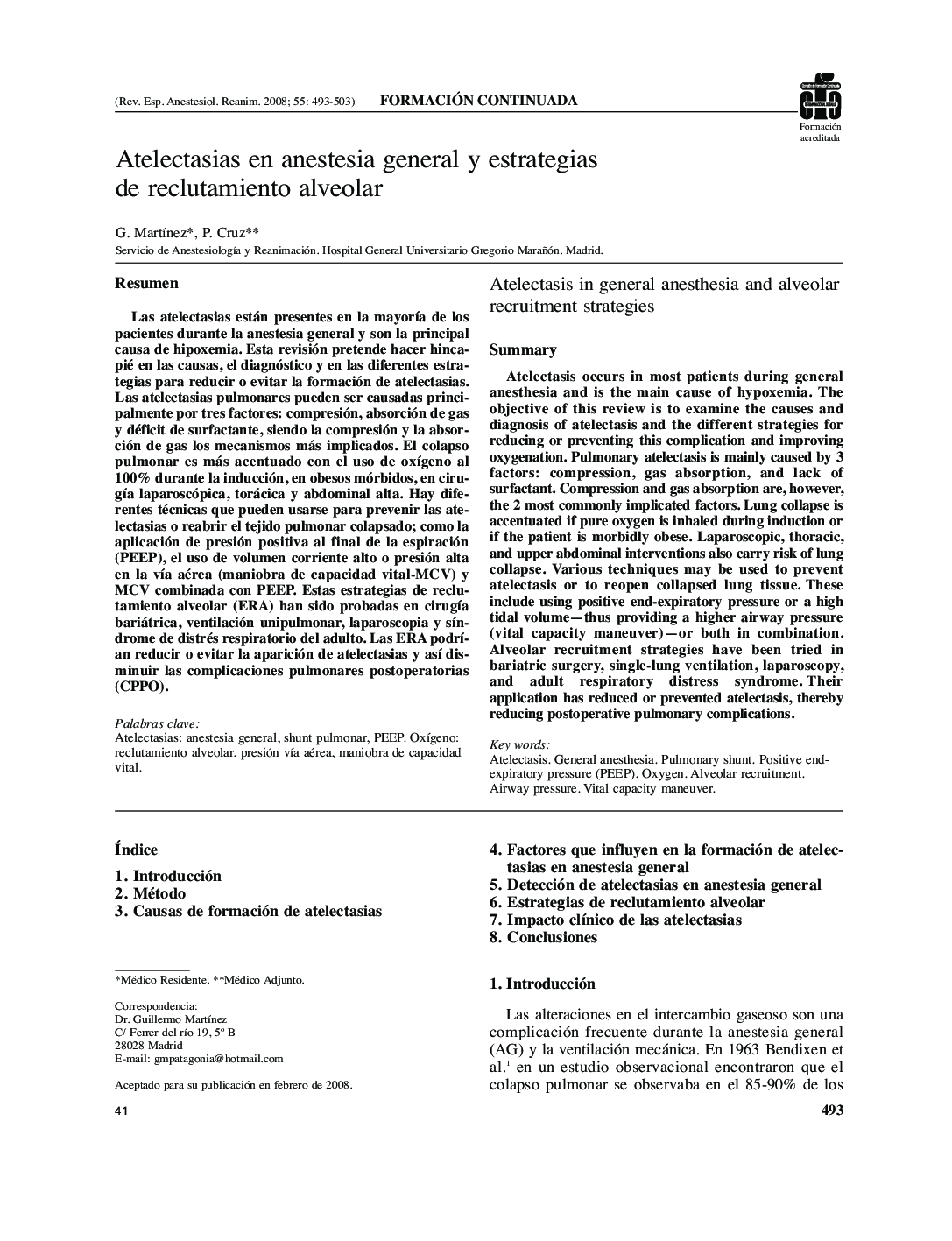| Article ID | Journal | Published Year | Pages | File Type |
|---|---|---|---|---|
| 2769762 | Revista Española de Anestesiología y Reanimación | 2008 | 11 Pages |
Abstract
Atelectasis occurs in most patients during general anesthesia and is the main cause of hypoxemia. The objective of this review is to examine the causes and diagnosis of atelectasis and the different strategies for reducing or preventing this complication and improving oxygenation. Pulmonary atelectasis is mainly caused by 3 factors: compression, gas absorption, and lack of surfactant. Compression and gas absorption are, however, the 2 most commonly implicated factors. Lung collapse is accentuated if pure oxygen is inhaled during induction or if the patient is morbidly obese. Laparoscopic, thoracic, and upper abdominal interventions also carry risk of lung collapse. Various techniques may be used to prevent atelectasis or to reopen collapsed lung tissue. These include using positive end-expiratory pressure or a high tidal volume-thus providing a higher airway pressure (vital capacity maneuver)-or both in combination. Alveolar recruitment strategies have been tried in bariatric surgery, single-lung ventilation, laparoscopy, and adult respiratory distress syndrome. Their application has reduced or prevented atelectasis, thereby reducing postoperative pulmonary complications.
Keywords
Related Topics
Health Sciences
Medicine and Dentistry
Anesthesiology and Pain Medicine
Authors
G. (Médico Residente.), P. (Médico Adjunto.),
